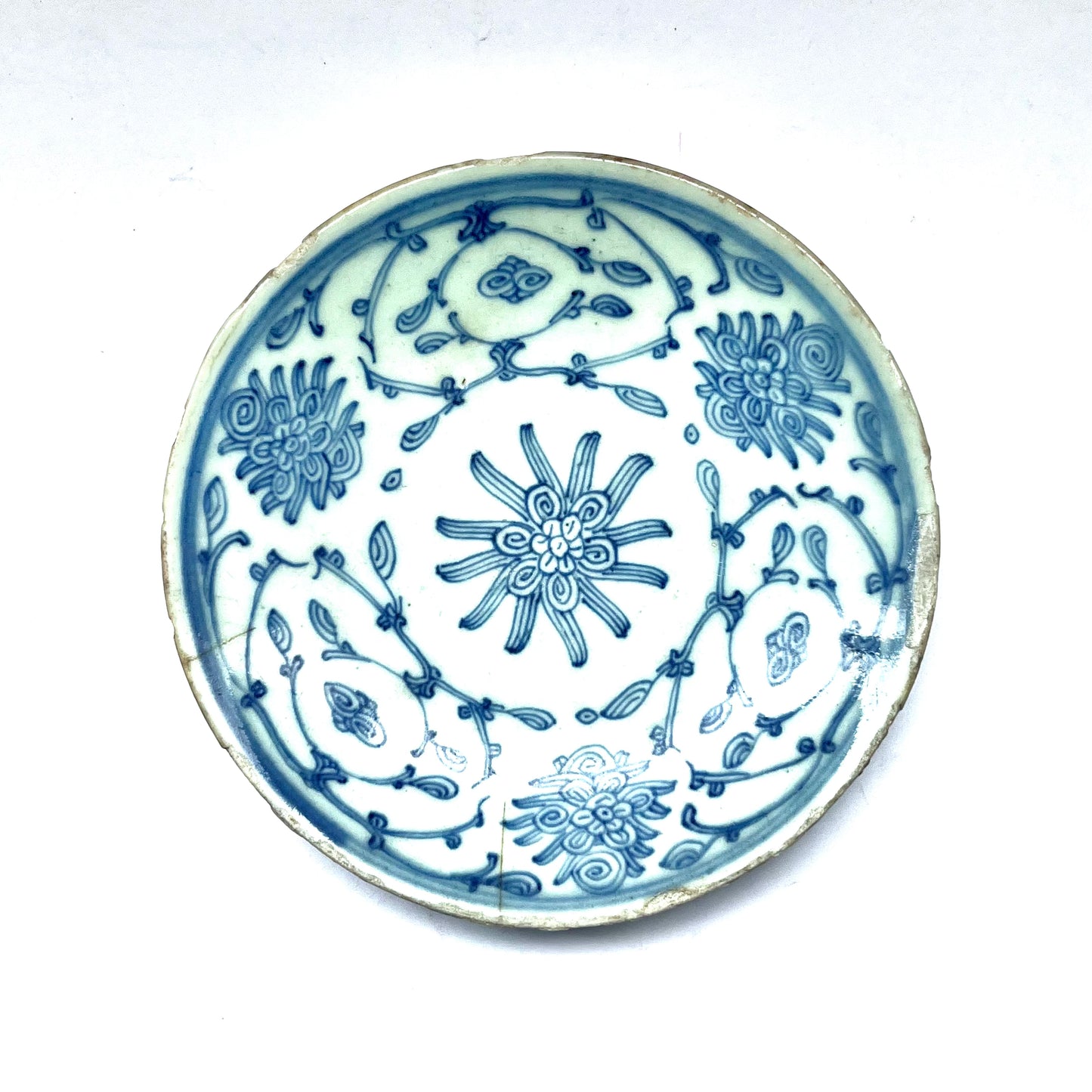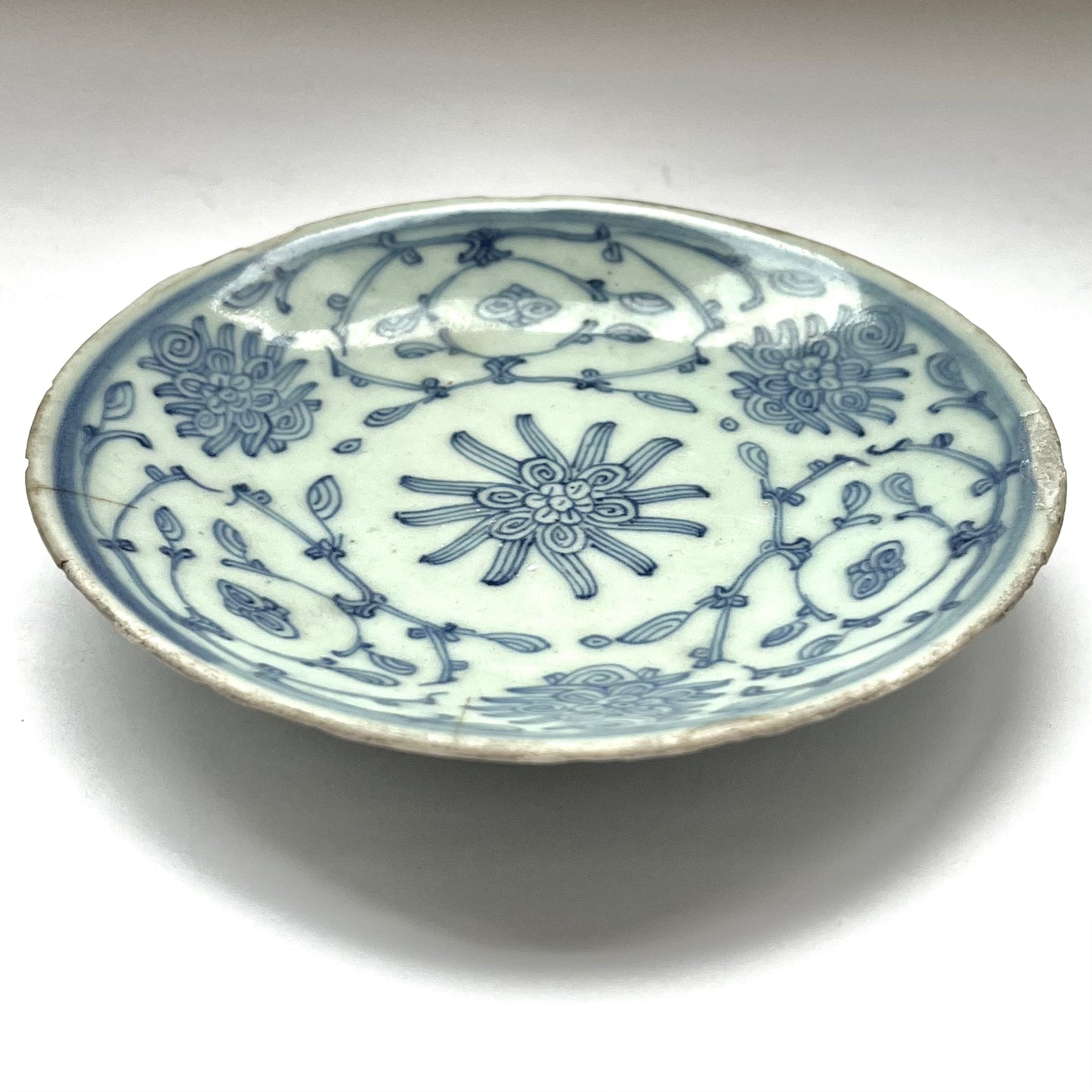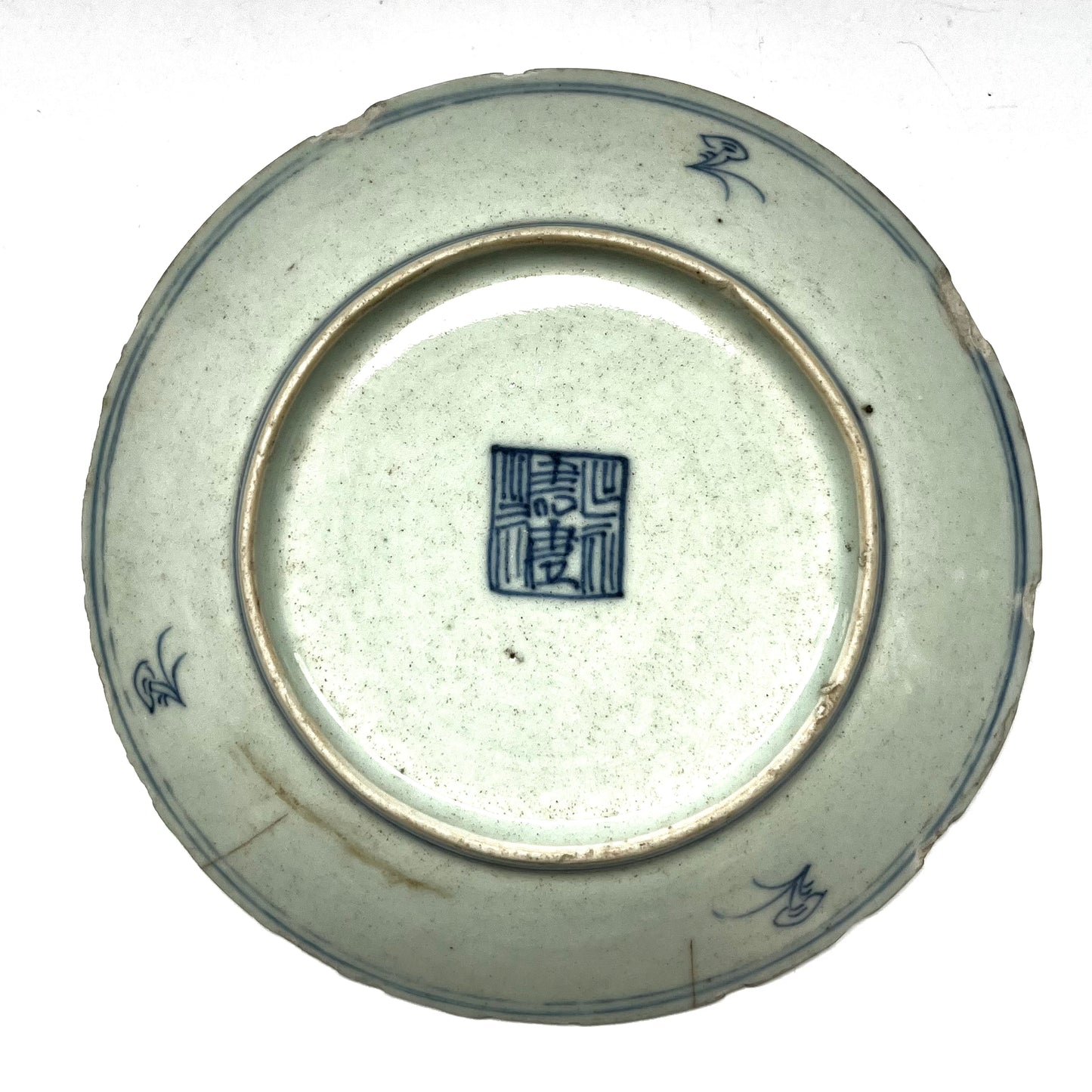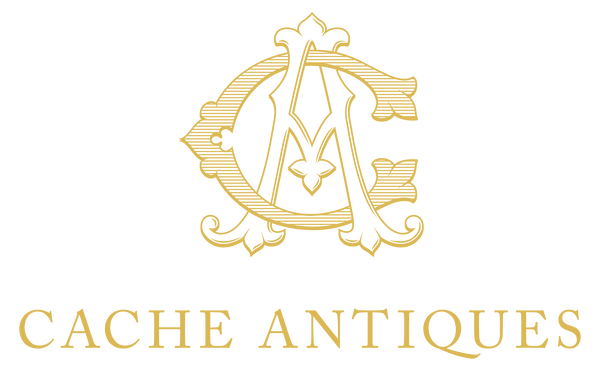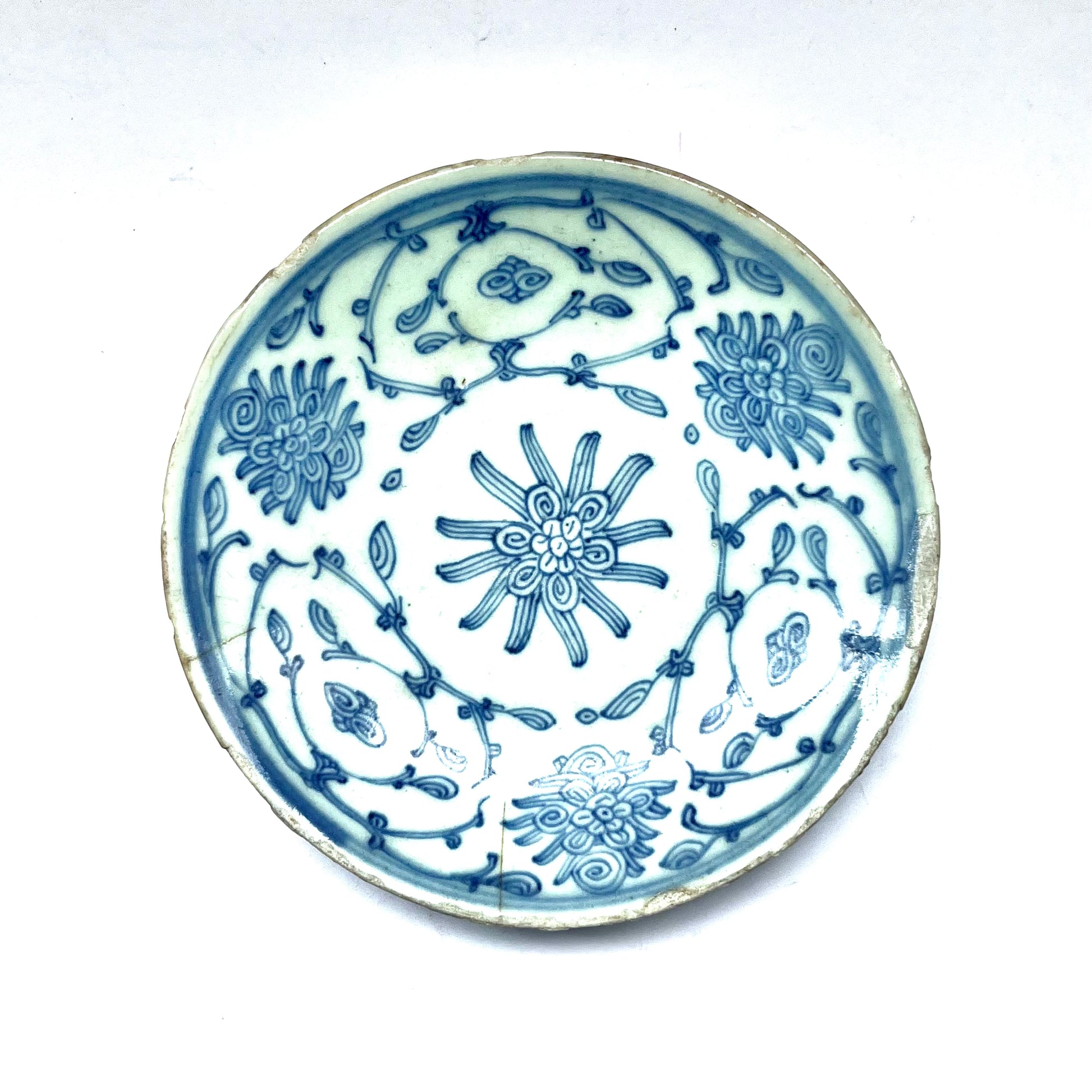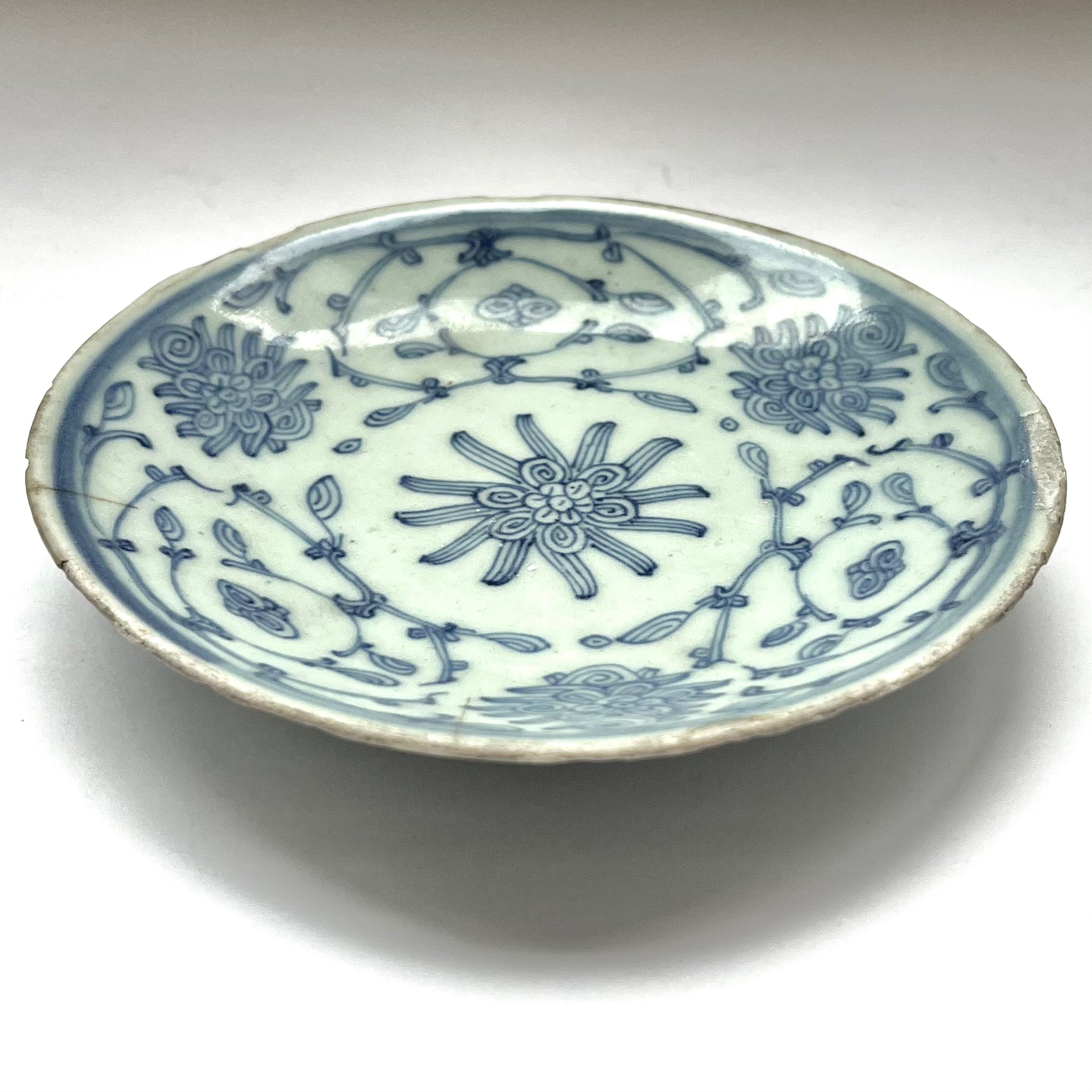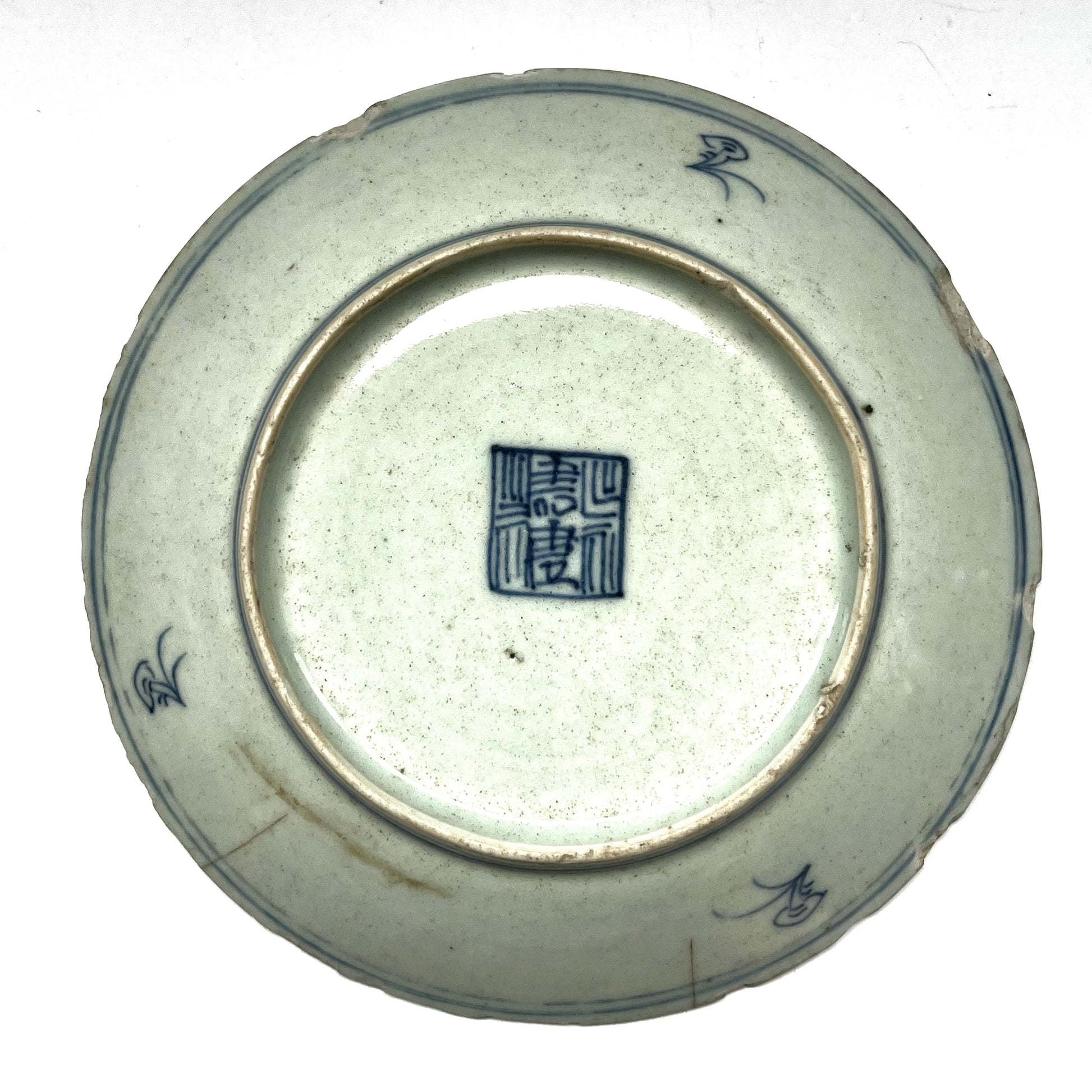cacheantiquessydney
Antique Swatow Plate, Southeast Asian circa 1800s
Antique Swatow Plate, Southeast Asian circa 1800s
Couldn't load pickup availability
A charming antique Swatow plate, no later than the mid Qing period (1800s), likely produced for the Southeast Asian market or of Southeast Asian origin.
Swatow ware as it was known back in the day was originally named as such as it was believed to be shipped from the port of Swatow, nowadays known as Shanzhou. Nowadays it is known as Zhangzhou ware as that is its primary place of origin, as it was produced during the late Ming Dynasty to early Qing Dynasty.
Unlike other highly ornamental styles such as Imari ware or famille rose, Swatow ware was characterised with translucent blue or turquoise over glaze, and a spontaneity of pattern and expressiveness that is not usually seen in Chinese porcelain. For that reason it was highly prized in the South-east Asian markets that it was exported to, with chiefs and royalty often seen by European missionaries to be eating from them. Moreover there was a small segment of Japanese tea masters who priced Swatow ware for its embodiment of the principle of wabi: austerity, spontaneity, and apparent artlessness, such as was demonstrated by cha no yu masters such as Sen no Rikyu
Inscription in seal-form script to the base.
Price marked at $90 AUD.
Measurements: 15cm diameter, 3cm high.
Fair antique condition, with historic chips to rim and base as well as two stable hairline cracks.
Shipping & Returns
Shipping & Returns
